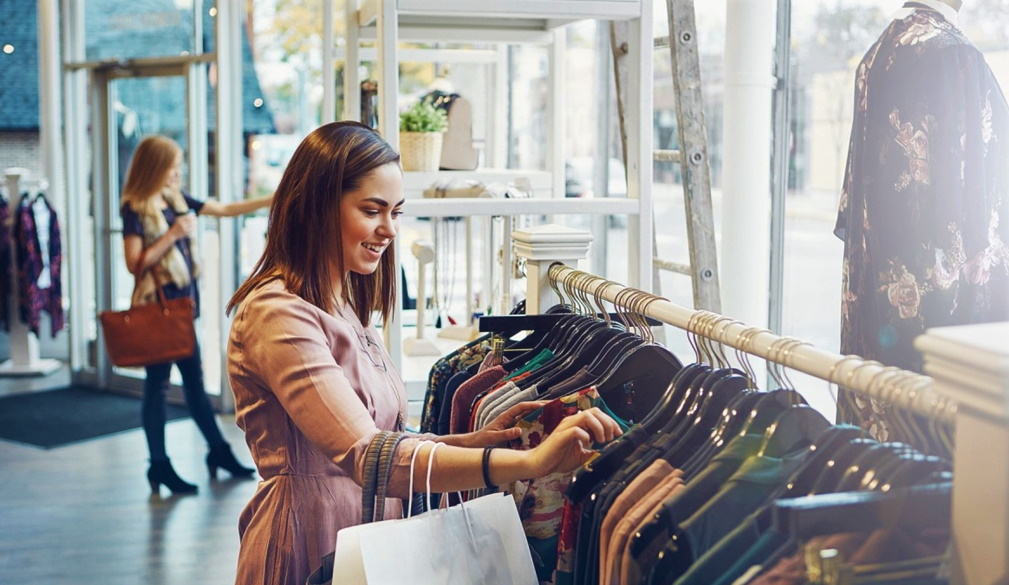Unlocking Retail study reveals in-person shopping is trumping online shopping

Shopper releases the findings of its recent ‘Unlocking Retail’ study, revealing that while consumers are researching products online in the wake of the pandemic, purchasing in store is still their preferred option.
The ‘Unlocking Retail’ study tapped into the hearts and minds of Australians to understand how they are feeling, what’s motivating them and whether shopping behaviours have changed post-pandemic. It was conducted in conjunction with research partner Kantar, surveying more than 1000 Australian shoppers who had made a purchase from a shopping centre in the previous 30 days.
Karissa Fletcher, Chief Marketing Officer at Shopper, explains, “The research confirmed that shoppers are actively choosing to visit shopping centres frequently, with 70% of consumers resuming pre-Covid shopping behaviours. Favouring the convenience and immediacy that comes with buying in-store, consumers enjoy the tactile and human shopping experience and the security of knowing what to expect when purchasing.”
Australians are shopping locally, with 1 in 3 visiting local and neighbourhood centres two to three times a week, indicating the relevance of local shopping in our daily lives. The in-person shopping experience entices shoppers to spend more, driving higher conversion rates and overall increases in average purchase values.
“Shopping centre visits are largely determined by the shopper’s needs at that time, so it is important for brands to consider multiple retail touchpoints to maximise brand exposure,” says Karissa. “Retail out-of home advertising is positioned to engage with consumers while they are in the retail environment and in a buying mindset, making it well-placed to prompt, prime and, importantly, convert for purchase.”
Shopper’s research found that in-store shopping is often the main source of inspiration for purchasing, with 8 in 10 people describing their last shopping experience as highly satisfying. Price promotions and deals are more important right now and are driving this response, with 70% of incremental purchases made once shoppers are in centre and 40% when they see something they like. An in-store brand presence directly impacts spending, conversion and the shopping experience. Click-and-collect services drove incremental sales, with 3 in 4 retailers reporting that shoppers bought at least one more product while in-store to collect their purchase.
Shopper’s research confirmed that consumers are hybrid shopping, using online for discovery, research, and comparison. The discovery phase of the shopping experience is critical, with 40% of Australian shoppers admitting to browsing online before going in store to purchase. Known in the industry as ‘webrooming’, this approach sees shoppers transition to physical shopping following an initial discovery period, to touch and feel products in real life just before committing to buy.
“The study highlights that going to physical stores instils greater buyer confidence and helps avoid the risk of delayed deliveries or the disappointment or having to return items,” says Karissa.
“Brands need to embrace the ‘phygital’ experience – the coming together of physical and digital shopping – as well as understanding shoppers and how they interact with different centre types, at different stages of the purchase journey. The same proportion of shoppers – one third – who visit large, destination centres to browse and buy also go to local shopping centres to browse and buy. The key to driving conversion is capturing attention whilst in the purchasing mindset and getting the product in the hands of the consumer, especially as 26% of shoppers exclusively browse and buy online,” explains Karissa.
“Pop-up stores are one-way brands can create meaningful engagement and incite product trial, particularly important for brands who have favoured an online presence. For shopping centres, pop-up retail experiences extend the centre’s community value and vibrancy, attracting greater visitation and drawing in new customers.”
The 'Unlocking Retail’ study also indicates that Australian’s have become more discerning when it comes to spending. They are willing to go out of their way to find a good deal, which includes brand switching and searching for alternatives. Covid-induced stock shortages saw almost half of all Australians try different brands and retailers. The research found that 55% of shoppers will now intentionally go out of their way to find the best price, even if it means going to different stores. For brands, retail out-of-home advertising is an effective strategy for showcasing deals and price-promotion messages.
“As cost-of-living pressures grow, shoppers become savvier and will wait for sales and promotional deals. Easy-to-spot discounts and offers will appeal to those who shop in-store, so out-of- home advertising becomes an effective medium within the retail environment,” adds Karissa.
Despite the increased awareness around sustainability, only 1 in 4 shoppers are actively seeking eco-friendly and sustainable products while shopping. While 2 in 3 shoppers want to do more for the environment, cost of-living pressure are thwarting shoppers from taking action However, Australians are focused on local and Australian-made goods, with almost half paying more attention to the origin of products.
“Shoppers have indicated that they can’t always afford to pay more for sustainability, and brands need to make this more accessible to consumers. But shoppers are shopping for local alternatives, with 1 in 4 shoppers feeling they are giving back to their community in this way. This behaviour came to the fore during Covid and is not looking to abate any time soon, making local shopping centres a key touchpoint for brands.”
To find out more about Shopper, visit: www.shoppermedia.com.au
Source: Kantar – Unlocking Retail Research, October 2022 (n=1,000, National)







